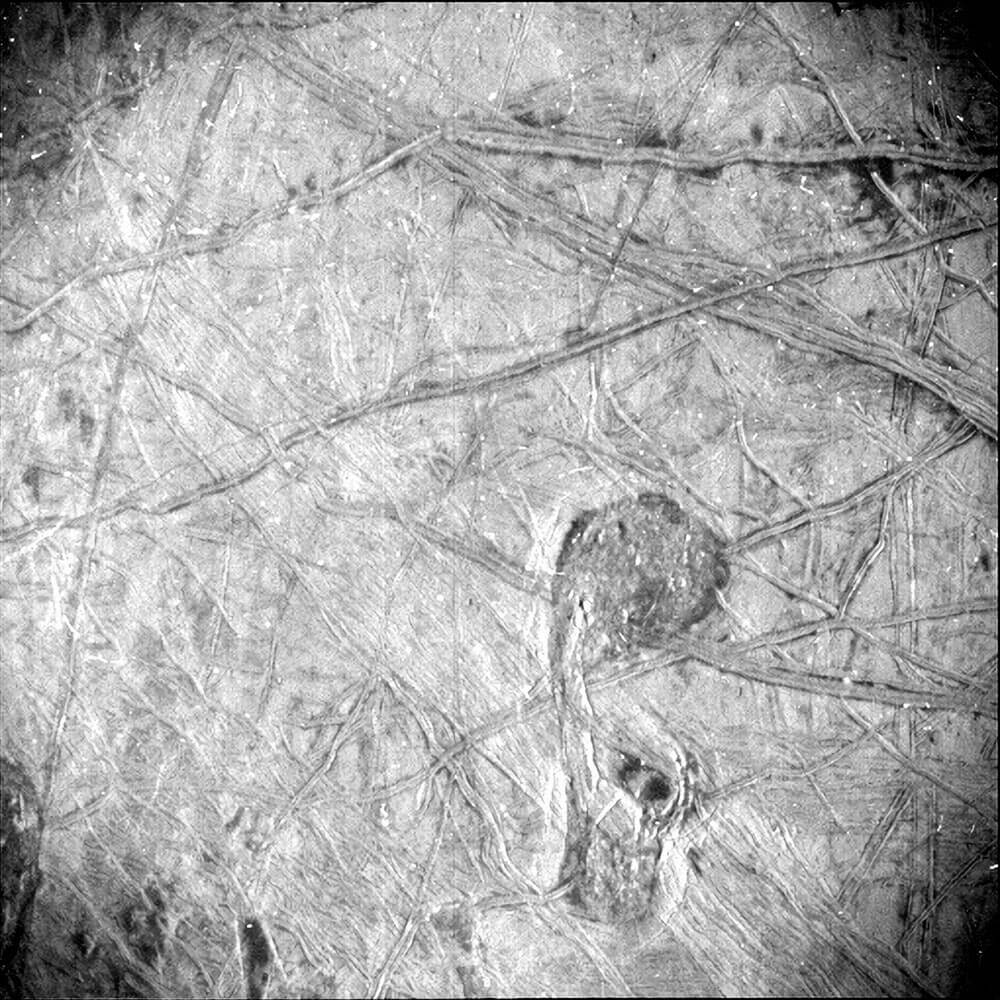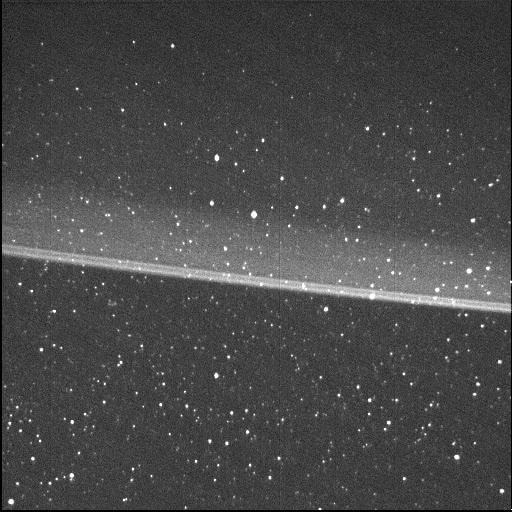Observations from the Juno spacecraft's flyby of the fair moon have provided the first close-up in more than two decades of this ocean world, resulting in stunning images and unique science

The highest-resolution image ever of a specific part of Europa, Jupiter's moon, taken by NASA's Juno mission reveals a detailed look at a questionable region of the moon's highly fractured icy crust.
The image covers roughly 150 by 200 km of Europa's surface, revealing an area networked with fine grooves and double ridges (pairs of long parallel lines indicating high ice formations). Near the upper right corner of the image, and also a little to the right and below center, there are dark spots that may be related to something below that erupts to the surface. Below the center and to the right there is an area shape reminiscent of a musical quarter note that measures 67 km from north to south and 37 km from east to west. The white dots in the image are signatures of high-energy particles penetrating from the harsh radiation environment around the moon.

Juno's Stellar Reference Unit (SRU) — a star camera used to guide the spacecraft — took the black-and-white image on September 29 from a distance of about 412 km. With a resolution ranging from 256 to 340 meters per pixel, the image was captured as Juno passed at a speed of about 24 kilometers per second, or 86,000 kilometers per hour, over a part of Europa that was at night, dimly illuminated by the "light of Jupiter" - Sunlight reflected from Jupiter's cloud tops.
Designed for low-light conditions, the SRU has also proven to be a valuable scientific tool, discovering shallow lightning in Jupiter's atmosphere, photographing Jupiter's mysterious ring system and now allowing a glimpse of some of Europa's most fascinating geological formations.

"This image unlocks an incredible level of precision in an area that has not been imaged before with such resolution and under such revealing lighting conditions," said Heidi Becker, SRU's co-principal investigator. “The team's use of a star-tracking camera for science is a great example of Juno's groundbreaking capabilities. These soil notes are so intriguing. Understanding how they were created - and how they are related to the history of Europe - will teach us about internal and external processes that shape the ice sheet."
More of the topic in Hayadan:
- Juno successfully completed its fourth flyby of Jupiter
- A wonderful new world: the Juno spacecraft reveals Jupiter as we have never known it
- Justice needs to be seen: The Israelis who explore what lies beneath the cloud cover of the largest planet in the solar system
- Juno reveals the depths of Jupiter's Great Red Spot

6 תגובות
Full Star of David
Now convince me that it's not another chorizo. The burden of proof is on you.
Yes, I also see Star of David. Or maybe it's a pentagram...
You can clearly see a network of highways and a Ferrari car stolen from Earth pulls up next to Baruch Jamili's falafel stand
It seems to me or do you also see the Star of David in the slots?
"Image captured"? The direct translation here came out strange